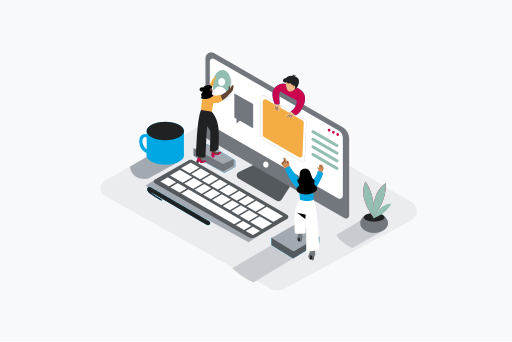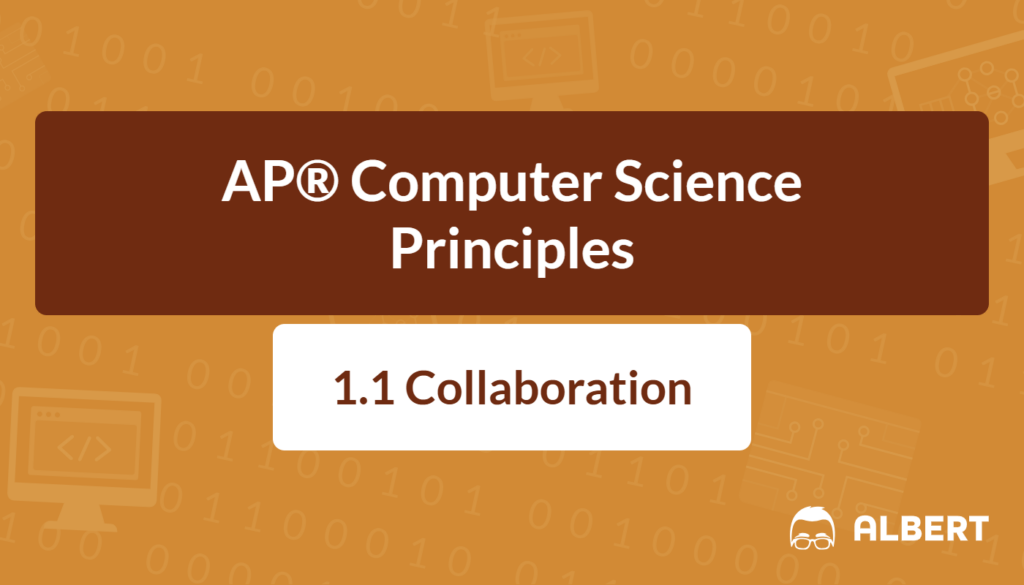Computing innovations shape daily life, whether sending text messages or using a navigation app. These innovations are not created by a single mind in isolation. Instead, they often emerge from teams that pool diverse talents and perspectives. Therefore, collaboration is crucial to making the best products possible.
Having a good understanding of teamwork methods helps when studying for the AP® Computer Science Principles exam. Moreover, encountering different viewpoints leads to unique solutions that might not have been obvious otherwise. As a result, collaboration can significantly improve computing innovations in terms of efficiency, creativity, and user satisfaction.
What We Review
What Is a Computing Innovation?
A computing innovation is any creation or concept where a computer program plays an essential role in its functionality. This includes everything from physical devices (like self-driving cars) to digital software (like video-editing apps) or even intangible ideas (like e-commerce platforms). These innovations often start with a clear goal: to solve a problem or make life easier.
For example, consider a self-driving car aiming to reduce road accidents. This physical innovation depends on software to process sensor data, make decisions, and control the vehicle’s movement. Alternatively, a social media platform is a nonphysical innovation that connects users around the world through online interactions. Therefore, understanding “what is a computing innovation” involves looking at how programs drive these technologies toward practical uses.
The Role of Collaboration in Developing Computing Innovations
Collaboration ensures that multiple perspectives and skill sets shape a computing project from start to finish. When team members share ideas, they can identify potential problems early and create better solutions. Therefore, collaborative environments typically allow members to learn from each other’s expertise and creativity.
For instance, imagine a group of students building a school app. One student might be excellent at coding, while another has strong design skills, and a third excels at user research. By combining these talents, the final app is more user-friendly, visually appealing, and technically sound. As a result, having more voices involved usually improves both the process and outcome of developing computing innovations.

Types of Computing Innovations
Physical Innovations
Physical innovations involve technology that exists in the real world. These projects still rely heavily on software. Examples of computing innovations in this category include wearables like smartwatches, drones used for delivery, and self-driving cars. Each one features intricate programming that dictates its actions.
Nonphysical Software Innovations
Nonphysical software innovations are products that only exist digitally. These include image-editing applications, word processors, or music-streaming services. Even though these tools do not have a physical form, they greatly affect how people communicate, create, and consume information.
Nonphysical Concepts
Some innovations exist mainly as ideas. For instance, e-commerce transforms the way we shop by enabling online transactions. Although websites and apps power e-commerce, the overall concept of digital marketplaces stands on its own. Consequently, these broader ideas also count as computing innovations.
The Interplay Between Collaboration and Diversity
Collaboration thrives when a team has diverse perspectives. People from different backgrounds bring varied problem-solving approaches, leading to more creative ideas. As a result, products become stronger and more widely acceptable to a broad audience.
Diversity also helps avoid bias. For instance, a video game development team that includes designers, artists, and testers from various cultures ensures the game appeals to multiple players. This collaboration can reveal hidden assumptions, making the final product more inclusive and enjoyable. Therefore, diverse teams are more likely to produce truly innovative ideas that resonate with a global user base.
Essential Skills for Effective Collaboration
Successful teamwork involves interpersonal skills that keep a project running smoothly. These skills often include:
- Communication: Expressing ideas clearly so everyone understands the goals.
- Consensus Building: Finding a middle ground that all group members can support.
- Conflict Resolution: Addressing disagreements in a calm, respectful way.
- Negotiation: Adjusting plans when needed so each team member’s perspective is heard.
For example, consider a group project where two members disagree about a color scheme. Good negotiators would brainstorm additional colors or themes. That discussion could lead to a standout design that suits the team’s overall vision. Therefore, mastering these skills will greatly improve one’s ability to contribute to computing innovations.
Tools for Collaboration
A range of online tools exist to make teamwork easier. Platforms like GitHub, Slack, and Google Docs allow team members to share documents, review code, and exchange feedback. As a result, they can save time, reduce confusion, and keep everyone aligned on project goals.
- GitHub allows version control of code, so collaborators can track changes and revert mistakes if needed.
- Slack provides instant messaging channels to ask questions and discuss project updates quickly.
- Google Docs enables real-time document editing from any location.
These tools create a space where communication flows smoothly and efficiently, even across big distances. Therefore, they are popular choices in both academic and professional settings.
Models of Collaboration
A common model of collaboration in software development is pair programming. In pair programming, two programmers share one computer. One person acts as the “driver,” typing the code, while the other person, known as the “observer” or “navigator,” reviews each line for errors or improvements.
Here is a quick demonstration using a short piece of Java code:
PROCEDURE CollaborationDemo
{
DISPLAY(Hello, collaboration!)
}- Defines a procedure named CollaborationDemo.
- Displays the message “Hello, collaboration!”.
During pair programming, a team might switch roles every few minutes. This ensures both members stay engaged and catch mistakes early. Therefore, models like pair programming can produce efficient, high-quality code and a more enjoyable development experience.
Conclusion
Collaboration is essential when developing computing innovations. By working together, teams gain input from multiple perspectives, leading to products that are more useful, more creative, and more inclusive. Additionally, diversity goes hand in hand with collaboration by reducing bias and creating well-rounded solutions.
Aspiring computer scientists are encouraged to practice these collaborative strategies in real-life school projects and personal endeavors. Working with others not only improves technical skills but also nurtures important qualities like communication, respect, and empathy. Therefore, remember that effective teamwork is a key ingredient in turning an idea into a successful computing innovation.
Key Terms to Know
- Computing Innovation – Any technology or concept that relies on a computer program for key functions
- Collaboration – The process of working with others to achieve shared objectives
- Pair Programming – A development practice where two people share one computer, with one typing and another guiding
- Diversity – Bringing together individuals from different backgrounds to enhance creativity and fairness
- Interpersonal Skills – Abilities like communication, consensus building, conflict resolution, and negotiation that help teams work effectively
Sharpen Your Skills for AP® Computer Science Principles
Are you preparing for the AP® Computer Science Principles test? We’ve got you covered! Try our review articles designed to help you confidently tackle real-world AP® Computer Science Principles questions. You’ll find everything you need to succeed, from quick tips to detailed strategies. Start exploring now!
Need help preparing for your AP® Computer Science Principles exam?
Albert has hundreds of AP® Computer Science Principles practice questions and full-length practice tests to try out.








